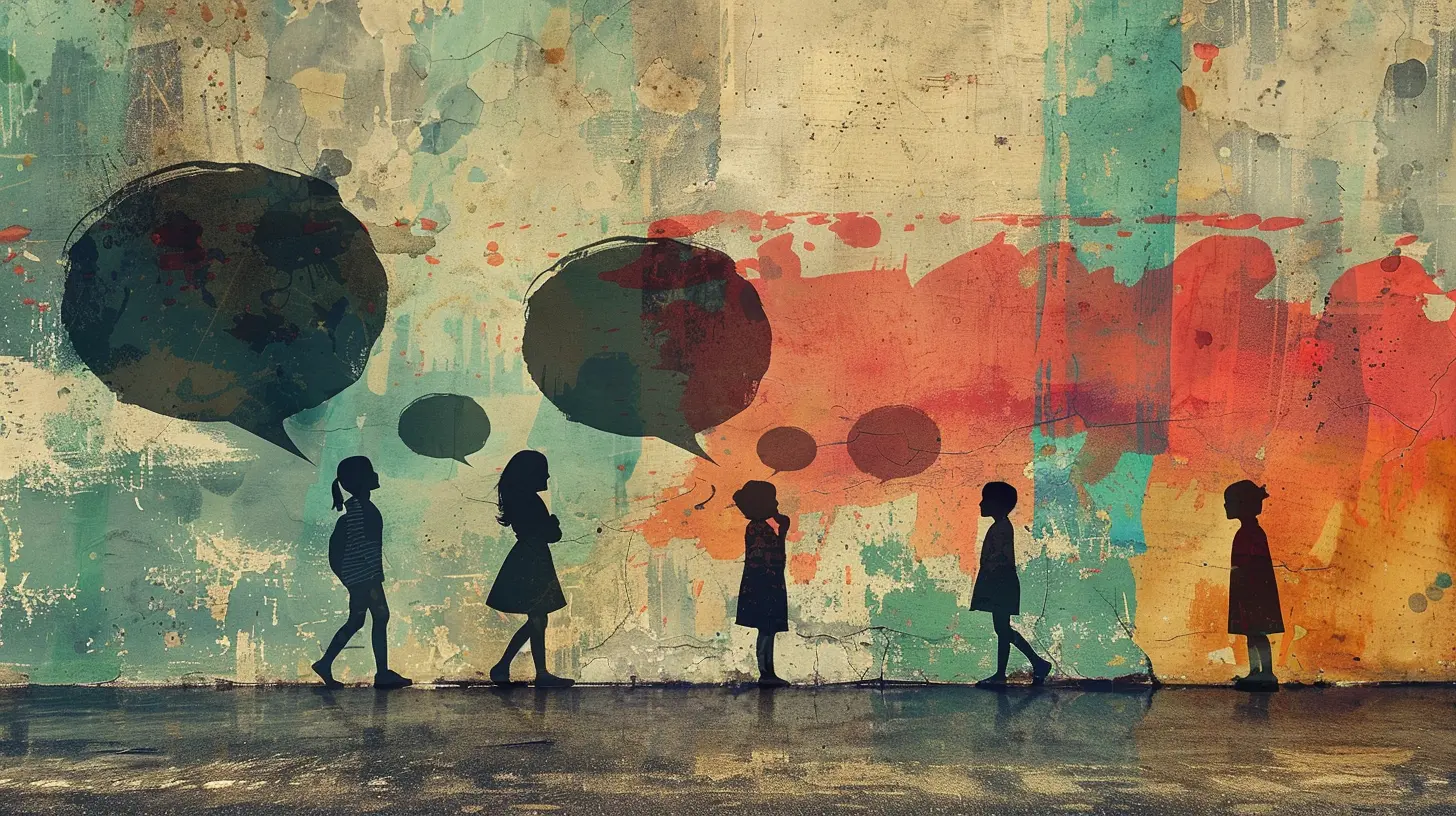The Impact of Tone: Why How You Say Something Matters
18 August 2025
Let’s be real—every parent has been there. You ask your kid to clean up their toys, and instead of cheerfully picking things up, they melt down like an ice cream cone on a hot sidewalk. You’re left wondering, “Did I say something wrong?” Chances are, it wasn’t what you said—it was how you said it.
Tone. That tiny detail we often underestimate but can make or break communication. Whether you're talking to your kids, your partner, or literally anyone else, tone is the secret sauce that determines whether your words build bridges or burn them.
Let’s dive into the real impact of tone, especially in parenting, and why it matters more than we often give it credit for.
What Is Tone, Really?
Tone is the emotional color behind your words. It’s the difference between “Can you help me?” and “CAN you HELP me?!” The same words, wildly different vibes, right?It includes your pitch, volume, speed, and attitude. And guess what? Your kids pick up on it like little emotional sponges. They may not understand big words yet, but they can tell when you’re stressed, irritated, or genuinely calm and caring.
Think of tone as the music behind your message. The same lyrics can feel loving or loaded, depending on the melody.
Why Tone Matters in Parenting
1. Kids Learn How to Communicate From You
Kids don’t just mimic your words; they mirror your delivery. If you often speak in a harsh or impatient tone, guess what? That’s the tone they’ll use—with you, with friends, with teachers. You’re setting the emotional temperature of their world.Setting the tone isn’t just about being polite—it’s about modeling emotional intelligence. Want them to be kind, empathetic, and calm under pressure? You’ve got to show them how it’s done.
2. It Affects How Kids Feel About Themselves
Ever hear the saying, “It’s not what you say, it’s how you say it”? For children, tone can boost their confidence or crush it, sometimes in a matter of seconds. A loving “You did your best!” feels worlds away from a sarcastic “Wow, that went well.”If a child constantly hears a disapproving or harsh tone, they might start to believe they’re always doing something wrong. That can lead to low self-esteem, anxiety, or even emotional withdrawal.
So, when you’re tired or frustrated, take a breath. Your tone might leave a deeper scar—or a bigger hug—than you think.
The Science Behind Tone and Emotional Response
This isn't just a feel-good parenting tip. Research backs it up. Studies in child development show that tone of voice significantly influences how kids interpret messages and respond emotionally.In one study, children reacted more positively to instructions when given in a warm, calm tone compared to a harsh or rushed one. Even when the same words were used, kids were more likely to cooperate and feel emotionally safe with supportive tones.
Why? Because tone affects how the brain processes social cues. A kind tone activates the soothing systems of the brain, while a threatening one triggers fight-or-flight responses. Your voice isn’t just sound—it’s a signal.
Practical Examples: It's All in the Delivery
Let’s play it out a bit. Imagine your 5-year-old just spilled juice all over the couch.Scenario A: Harsh Tone
“You’ve got to be kidding me! How many times do I have to tell you to be careful?”Scenario B: Calm Tone
“Oh no, we’ve got a mess! Accidents happen—let's clean it up together, okay?”Both acknowledge the situation. But Scenario B teaches responsibility with empathy, keeps everyone’s dignity intact, and completely shifts the energy. It’s not about sugarcoating the problem; it’s about problem-solving without creating shame.
How Tone Builds or Breaks Connection
Communication is more than transferring information—it’s about connection. And tone plays a huge role in that.When your tone is warm and understanding, your child feels heard. When it’s cold or dismissive, they feel rejected or invisible. And that feeling? It builds up over time and becomes part of their internal narrative.
Here’s the thing: Kids crave connection more than compliance. When they feel connected to you, they want to listen. They don’t need the fear of discipline to behave; they need the security of love.
The Role of Tone in Discipline
Discipline doesn’t mean domination. It means teaching. And guess what? Kids don’t learn well when they’re scared or ashamed.You can be firm and kind at the same time. Saying, “I’m not okay with that behavior, and we’ll talk about it when we’re both calm,” sets boundaries without destroying trust. It’s all about the delivery.
Think about your own experiences. Ever had a boss or partner talk down to you? How motivated were you to listen—or change? Exactly. Kids are mini-humans with mega feelings. Treat them the way you’d want to be treated.
What About Tone With Teens?
Oh boy. If you’ve got a teen, you know things can get... complicated. They're allergic to lectures and hypersensitive to judgment. Tone becomes even more critical.A teen hears “Why didn’t you do your homework?” in a condescending tone and immediately goes on the defensive. But a simple shift—“Hey, everything okay with your schoolwork lately?”—keeps the door open for real talk.
Teens want autonomy, not authority. Tone can make the difference between a door slam and a heart-to-heart.
Tone in Co-Parenting and Relationships
Let’s not forget: kids are watching how you speak to your partner, too. If arguments are laced with sarcasm, yelling, or passive-aggression, that becomes the norm for conflict resolution in their eyes.You don’t have to be perfect—but you do have to be aware. Use tone to model what healthy disagreements look like. “I need a minute to cool down” in a neutral or kind tone is a powerful lesson in emotional regulation.
Tips for Improving Your Tone Game
Don’t worry—this isn’t about walking on eggshells or pretending to be Mary Poppins. It’s about being intentional. Here are a few bite-sized tips:1. Pause Before Reacting
Before you speak, take a beat. Ask yourself: “Is my tone matching the message I want to send?” If not, adjust.2. Match Your Message
Got something serious to say? Use a quiet, steady tone. Want to hype your kid up? Bring in the enthusiasm. Make your tone a reflection of your intent.3. Mirror Your Kid’s Emotional State
If they’re anxious, don’t come in hot. Meet their energy first, then gently guide it to calm. Think of your tone like a dimmer switch—not an on/off button.4. Be Mindful of Non-Verbal Tone
Your face, body language, and eye contact all send signals. A loving tone with crossed arms and eye-rolls? Mixed messages don’t work. Be congruent.5. Apologize When You Slip
We all lose it sometimes. When you do, own it. Saying, “I’m sorry for the way I said that—I was feeling overwhelmed,” teaches accountability and gives your child permission to do the same.Final Thoughts: Speak With Purpose, Not Just Words
Tone is your parenting superpower. It's invisible, but its effects are undeniable. It can calm storms, heal wounds, and build lifelong trust. It’s not about being soft—it’s about being smart.The way you speak becomes the way your child thinks. So, if there's one takeaway from all this, it's that tone isn't just a background detail—it's center stage. Use it wisely. Speak with love, with intention, and with the kind of tone that echoes in your child’s heart long after the conversation is over.
all images in this post were generated using AI tools
Category:
Communication With KidsAuthor:

Kelly Snow
Discussion
rate this article
1 comments
Zayla Love
This article beautifully highlights the crucial role tone plays in communication. It’s a reminder that our words, coupled with our tone, shape our children's emotional and social development.
August 24, 2025 at 2:37 AM

Kelly Snow
Thank you for your thoughtful feedback! I'm glad you found the article insightful regarding the importance of tone in communication and its impact on children's development.


